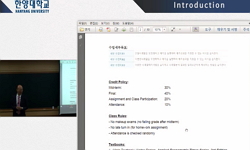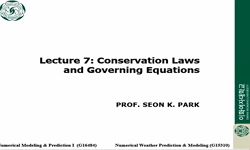연구목적 : 자간전증 발생을 예측하는데 혈청 digoxin-like immunoreactive substance (DLIS) 농도가 유용한지 알아보기위해, 혈청 DLIS 농도와 임신주수의 연관성을 관찰하고, 정상임부 및 자간전증환자...
http://chineseinput.net/에서 pinyin(병음)방식으로 중국어를 변환할 수 있습니다.
변환된 중국어를 복사하여 사용하시면 됩니다.
- 中文 을 입력하시려면 zhongwen을 입력하시고 space를누르시면됩니다.
- 北京 을 입력하시려면 beijing을 입력하시고 space를 누르시면 됩니다.
Postpartum Serum Digoxin-like Immunoreactive Substance Concentration in Preeclamptic pregnancies = 자간전증 환자의 분만전후 혈청내 Digoxin-like Immunoreactive Substance의 농도변화
한글로보기https://www.riss.kr/link?id=A2023627
-
저자
Jeong,Eun-Hwan (Obstetrics and Gynecology, College of Medicine, Chungbuk National Unversity) ; Lee,Do-Hoon (Obstetrics and Gynecology, College of Medicine, Chungbuk National Unversity) ; Son,Bo-Ra (Clinical Pathology) ; Kang,Seok-Won (Obstetrics and Gynecology, College of Medicine, Chungbuk National Unversity) ; Ji,Ill-Woon (Obstetrics and Gynecology, College of Medicine, Chungbuk National Unversity)
- 발행기관
- 학술지명
- 권호사항
-
발행연도
1998
-
작성언어
English
- 주제어
-
KDC
510.4
-
자료형태
학술저널
-
수록면
209-216(8쪽)
- 제공처
- 소장기관
-
0
상세조회 -
0
다운로드
부가정보
국문 초록 (Abstract)
연구목적 : 자간전증 발생을 예측하는데 혈청 digoxin-like immunoreactive substance (DLIS) 농도가 유용한지 알아보기위해, 혈청 DLIS 농도와 임신주수의 연관성을 관찰하고, 정상임부 및 자간전증환자간에 분만전후 혈청 DLIS 농도의 차이가 있는지 알아보고자 하였다.
대상 및 방법 : 임신주수벌로 무작위 선정한 73명의 정상임부의 혈청 및 분만진동으로 입원한 정상임부 21명과 자간전증환자 23명으로부터 분만전, 분만후 각각 24시간, 36시간, 1주일후에 연속적으로 채취한 혈청으로 Fluorescence Polarization Immunoassay를 이용하여 DLIS 농도를 측정하였다. 통계분석은 선형회귀분석, 반복측정값을 이용한 analysis of variance와 t-test를 이용하였다
결과 : 정상임신의 경우 혈청 DLIS 농도는 임신주수가 증가함에 따라 지속적으로 증가하였고 (y= 0.575x + 15.144 ; r= 0.57 ; p<0.0001), 분만직전에 비해 혈청 DLIS 농도는 분만후 급격히 감소하였으나 (분만전, 0.38 ± 0.12 ; 분만 24시간후, 0.24 ± 0.09 ; 분만 36시간후, 0.25 ± 0.1 ; 분만 1주일후, 0.19±0.07 ng/ml, p<0.0001), 자간전증의 경우는 분만후에도 뚜렷한 감소가 없었다 (각각 0.35±0.19 ; 0.29±0.19 ; 0.34±0.17 ; 0.25±0.12p=0.2279) 임신 3기의 자간전증 환자의 혈청 DLIS 농도는 정상임신과 차이가 없었다 (0.354 ± 0.19 ng/ml vs 0.381±0.12 ng/ml, p=0.533).
결론 : 혈청 DLIS 농도는 임신주수에 따라 증가되며, 분만후에는 괍격히 감소한다. 그러나 혈청 DLIS 농도 측정은 자간전증의 발생을 예측하는데 유용성이 없다.
다국어 초록 (Multilingual Abstract)
Purpose : To determine clinical usefulness of serum digoxin-like immunoreactive substance levels as a predictor of preeclampsia, we evaluated the relationship between serum digoxin-like immunoreactive substance levels and gestational age. and compare...
Purpose : To determine clinical usefulness of serum digoxin-like immunoreactive substance levels as a predictor of preeclampsia, we evaluated the relationship between serum digoxin-like immunoreactive substance levels and gestational age. and compared pre and postpartum digoxin-like immunoreactive substance levels in normal and preeclamptic patients.
Material and Methods : We measured serum digoxin-like immunoreactive substance levels with Fluorescence Polarization Immunoassay (Abbott, IL) in 73 Patients during either the first (n=11), second (n=31), or third (n=31) trimester of pregnancy. We also measured serial serum digoxin-like immunoreactive substance levels in 21 normotensive and 23 preeclamptic patients at immediate prepartum, postpartum 24 hours, postpartum 36 hours, and postpartum 1 week. Statistical evaluation was performed with the linear regression, repeated measures analysis of variance and t-test.
Results : Serum digoxin-like immunoreactive substance levels increased throughout gestation (y=0.575x + 15.144, r²=0.3237; p<0.0001), and decreased rapidly after delivery in normal pregnancies (prepartum, 0.38 ± 0.12; postpartum 24 hours, 0.24± 0.09; postpartum 36 hours, 0.25 ± 0.1; postpartum 1 week. 0.19±0.07 ng/ml, p<0.0001). There was no significant postpartum decreases in preeclamptic pregnancies (0.35±0.19; 0.29±0.19; 03.34±0.17; 0.25±0.12, respectively, p=0.2249). There was no difference in digoxin-like immunoreactive substance levels between normal and preeclamptic pregnancies of third trimester (0.354±0.19ng/ml vs. 0.381±0.12ng/ml, p=0.533).
Conclusion : Serum digoxin-like immunoreactive substance levels increase with gestational age, and decrease rapidly after delivery. However, measuring digoxin-like immunoreactive substance levels is not useful as a predictor of preeclampsia.
동일학술지(권/호) 다른 논문
-
- 충북대학교 의과대학 충북대학교 의학연구소
- 한기석
- 1998
-
- 충북대학교 의과대학 충북대학교 의학연구소
- 한기석
- 1998
-
- 충북대학교 의과대학 충북대학교 의학연구소
- 김동호
- 1998
-
전종인대 및 섬유륜 결핍시 요추간판탈출증 수술중 발생한 혈관손상의 기전
- 충북대학교 의과대학 충북대학교 의학연구소
- 김동호
- 1998




 RISS
RISS







